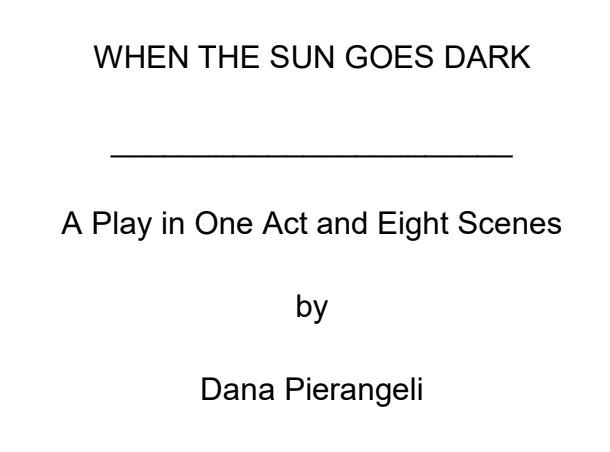2021 Honorable Mention – Dana Pierangeli

When the Sun Goes Dark
Medium: 65-minute Play
The focus of this piece is of course the science behind what would occur if the sun went dark, but more importantly to explore human experiences. In the approximately 8 minutes it takes for light from the sun to reach the earth, so what would people do in those 8 minutes to make their last minutes on earth meaningful? After that, there is complete uncertainty. A play is a beautifully artistic way to explore science topics like these because it fuses two different intellectual fields. The idea of the sun going dark has only ever been discussed in theories because in reality, the sun would not just go out suddenly. It is a billion year process just to become a red giant, which is the first step to the death of the sun. After that, the sun will burn as a red giant for about a billion years until the hydrogen in the outer core depletes, leaving an abundance of helium. This will soon cause the sun to fuse into a white dwarf, leaving behind a planetary nebula out of the outer material. This is not likely to happen for another 7 to 8 billion years. However, the play uses research on the possibility of this phenomenon to back up the premise. I found through my research that if this were to occur, the world would be plunged into darkness with not even the moon to light the night, quickly run out of oxygen because of the cessation of photosynthesis with plants, freeze over with the molten core only warming us for a little while, as humanity likely becomes lost forever. This is the primary science that is used within the play.
